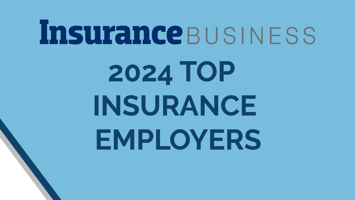Ellerbrock-Norris has been named to the list of Top Insurance Employers of 2024 by Insurance...
Employer's Guide to Workers' Compensation in Nebraska

Navigating the intricate workers' compensation in Nebraska can be challenging for employers. This guide will provide valuable insights and tips to help employers understand and comply with these laws, manage their program, lower their E-Mod and more.
Importance of Workers' Compensation in Nebraska
Workers' compensation in Nebraska is crucial for employers as it provides financial protection in the event of a workplace injury or illness. By carrying workers' compensation insurance, employers can ensure that they have the means to cover medical expenses, lost wages, and other related costs for their employees.
Having workers' compensation insurance also helps employers comply with legal requirements. In Nebraska, employers are generally required to carry workers' compensation insurance if they have one or more employees. Failing to do so can result in penalties and legal consequences.
Furthermore, workers' compensation insurance can help protect employers from lawsuits. When employees are covered by workers' compensation, they generally cannot sue their employer for injuries or illnesses that occur on the job. This provides employers with a level of legal protection and reduces the risk of costly litigation.
Integrating Workers' Compensation into Risk Management
Integrating workers' compensation into the overall risk management plan is essential for employers. By considering workers' compensation as an integral part of risk management, employers can effectively identify, assess, and mitigate workplace risks.
Workplace safety isn't just tied to workers' compensation. Back to work programs, on-site medical care or therapy, group benefits plans, workplace culture and continued education all tie back to the bottom line of your business. While you may need workers' compensation insurance, it's just one piece in the overall risk management plan for your business, built to protect your revenue, take care of your employees and set a long-term vision for success.
One way to integrate workers' compensation into risk management is by conducting thorough risk assessments. This involves identifying potential hazards, evaluating their likelihood and severity, and implementing measures to reduce or eliminate those risks. At Ellerbrock-Norris, we call this ENCORE (Ellerbrock-Norris Comprehensive Ongoing Risk Evaluation).
By addressing workplace hazards proactively, employers can minimize the likelihood of accidents and injuries, ultimately reducing the need for workers' compensation claims. We measure 10 impact areas of risk and assign a score accordingly to help you prioritize and manage each according to your unique business model and industry.
Another aspect of integrating workers' compensation into risk management is promoting a culture of safety. Employers should establish clear safety policies and procedures, provide appropriate training to employees, and enforce safety protocols. By fostering a safe work environment, employers can prevent workplace injuries and reduce the frequency and severity of workers' compensation claims.
Additionally, employers can integrate workers' compensation into risk management by regularly reviewing and updating safety programs and policies. By staying informed about changes in laws and regulations, employers can ensure that their workers' compensation program remains compliant and effective in mitigating risks.
Understanding Workers' Compensation Laws in Nebraska
Understanding the workers' compensation laws in Nebraska is essential for employers to navigate the system successfully. In Nebraska, employers are generally required to carry workers' compensation insurance if they have one or more employees. However, there are exceptions for certain types of employment, such as agricultural or domestic work.
Employers should familiarize themselves with the specific requirements and regulations outlined by the Nebraska Workers' Compensation Court. This includes understanding the process for filing a claim, reporting workplace injuries, and providing necessary documentation.
It is also crucial for employers to understand the benefits provided under workers' compensation. This includes coverage for medical expenses, temporary or permanent disability benefits, vocational rehabilitation, and death benefits for dependents in case of a fatal workplace accident.
By understanding the workers' compensation laws in Nebraska, employers can ensure compliance, effectively manage claims, and provide the necessary support to their employees in case of a workplace injury or illness.
Implementing Safety Programs to Prevent Workplace Injuries
Implementing safety programs is crucial for preventing workplace injuries and reducing the need for workers' compensation claims. Employers should develop comprehensive safety programs that address potential hazards, provide training to employees, and establish clear protocols for maintaining a safe work environment.
One important aspect of safety programs is hazard identification and assessment. Employers should regularly inspect the workplace to identify potential hazards, such as unsafe machinery, hazardous materials, or inadequate safety measures. By addressing these hazards promptly, employers can prevent accidents and injuries.
Training is another key component of safety programs. Employers should provide initial and ongoing training to employees on topics such as proper equipment usage, emergency procedures, and hazard recognition. By educating employees about workplace safety, employers can empower them to take proactive measures and prevent injuries. Joining a safety network or employee education program is a great first step in this process. At Ellerbrock-Norris, we have the ENCORE Safety Network, which brings together Nebraska businesses for education for their employees, events that provide proven strategies to improve safety (and lower your E-Mod), and networking opportunities to meet like-minded safety directors.
Finally, safety programs should include protocols for reporting and investigating incidents. Employers should establish a clear process for employees to report workplace injuries or near misses. This allows for timely intervention, investigation, and implementation of corrective measures to prevent similar incidents in the future.
By implementing comprehensive safety programs, employers can create a culture of safety, reduce the risk of workplace injuries, and ultimately lower their workers' compensation costs.
Strategies to Lower the E-Mod Score
The Experience Modification (E-Mod) score is a factor that impacts the cost of workers' compensation insurance for employers. A high E-Mod score indicates a higher risk and can result in higher premiums. Therefore, employers should implement strategies to lower their E-Mod score and reduce their workers' compensation costs.
Obviously, workplace safety is a key component. By investing in safety programs, providing training, and maintaining a safe work environment, employers can reduce the frequency and severity of workplace injuries. This, in turn, can lead to a lower E-Mod score and potentially lower insurance premiums.
Another strategy is to actively manage workers' compensation claims. Employers should closely monitor claims, promptly investigate incidents, and work with injured employees to facilitate their recovery and return to work. By actively managing claims, employers can minimize their impact on the E-Mod score and control costs.
Additionally, employers can implement return-to-work programs. These programs aim to facilitate the transition of injured employees back to the workforce by providing modified duties or accommodations. By getting injured employees back to work in a timely manner, employers can reduce the duration of claims and limit their impact on the E-Mod score. If you do not have an adequate back-to-work program in place today, we can help.
Regularly reviewing and improving safety programs is also essential for lowering the E-Mod score. By analyzing trends, identifying areas for improvement, and implementing corrective measures, employers can continuously enhance their safety practices and further reduce the risk of workplace injuries.
By implementing these strategies, employers can effectively lower their E-Mod score, reduce workers' compensation costs, and create a safer work environment for their employees.




.png?height=200&name=Blog%20Image%20(5).png)



Share Your Thoughts